Bonsai Techniques
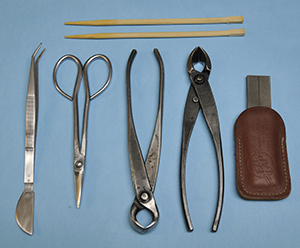
Tools
by Lew Buller
Over a period of about 10 years, I spent the better part of $1,000 on tools. It sounded better if I told my wife I was spending only about $100 a year on tools.
You don’t need every tool in the catalog all at once; you need to acquire tools only as you are acquiring trees that require new skills and therefore need new tools.
You don’t need to buy the most expensive tools; less expensive tools kept clean, oiled, and sharp will last many years. A trip through my toolbox shows tools that need to be acquired at different stages.
The essentials:

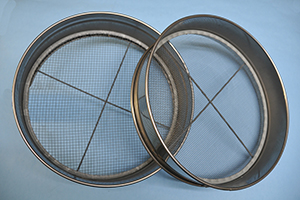
- Bamboo chopsticks
- Tweezers
- Scissors
- 8” Knob cutters
- 8” Concave cutters
- Small diamond scissor sharpening stone
- Soil Sifters
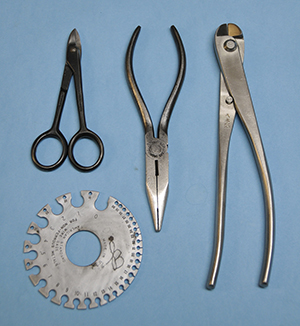
Learning to wire
- Small wire cutters for small wire (You can cheat by putting fine wires deep into the jaws of your scissors–a place that branches will never reach–and cutting carefully)
- Needle nosed pliers
- Large wire cutters
- Wire gauge (optional) Look carefully; I engrave my initials on my tools
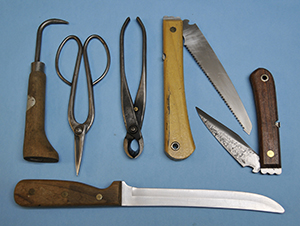
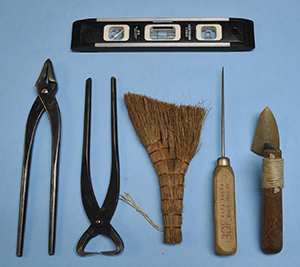
Specialty tools
- Root hook
- Root scissors (old or chipped)
- Old or broken concave cutters for roots
- Root knife (or thrift store butcher knife)
- Folding saw–Japanese pull style
- Folding knife–kept sharp for air layering
- 9” Level (level turntable before attempting to pot tree)
- Jin pliers; bonsai pliers (also useful for straightening wire)
- Branch cutter (see “Bigger tools” for photo)
- Branch splitter
- Large oil stone or diamond sharpening stone (not shown)
- Round sharpening stones for curved surfaces (not shown)
- Brush with fine straws
- Ice pick (for making holes in plastic pots for tie-down wires)
- Tamping trowel (for pressing down fresh new soil)
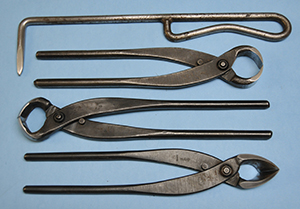
Bigger tools for larger trees
- Root hook (can be used for making holes so fresh soil can be introduced up close to trunk–as an alternative to cutting wedges in soil around trees that should not be bare-rooted.)
- Branch cutter (makes flush cut rather than concave cut)
- 11” Knob cutter
- 11” Concave cutter
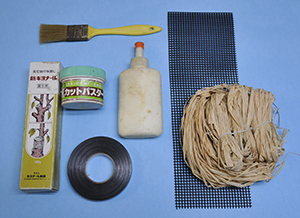
Supplies
- Wound sealers
- Nylon bristle brush (for applying rooting hormone)
- Carpenters’ glue
- Green garden tape
- Latex gloves (not shown)
- Plastic screen to cover drainage and wire holes
- Bundle of raffia
Basic maintenance
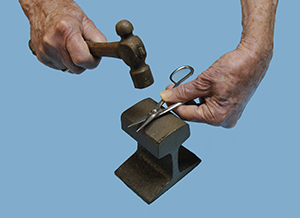
Scissors may have play after the blades are closed. This is due to wear at the rivet and can be fixed easily. Use a small hammer to tap the rivet lightly, and check after each tap, stopping when the scissors close cleanly and have no further play in them.
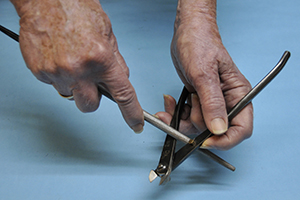
Several tools have stops on them, to keep the jaws from closing against one another and damaging their cutting edges. After cutting edges have been sharpened repeatedly, there may be a gap when the jaws are closed. The stop is made of brass and is hard to file down; it is easier to file a notch that fits the stop and deepen it when necessary. Use a round (rat tail) file.
Truck
(not shown)–I bought it so I could move my bonsai to shows and for sales.
